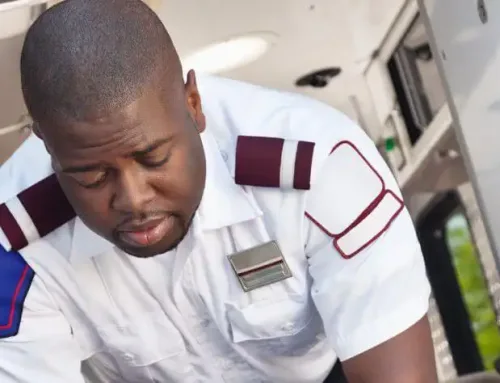How Long Does It Take to Get a Physical Therapy Degree? A Guide
Becoming a licensed physical therapist is a multi-year journey, leading many to ask, “how long does it take to get a physical therapy degree?” On average, it takes six to eight years, including a bachelor’s degree (four years) and a Doctor of Physical Therapy (DPT) program (two to three years). However, accelerated pathways and dual-degree programs may help students reach their goals faster.
Since a DPT is required for licensure, choosing the right academic path can make a big difference in how long it takes to start practicing. Let’s break down the education timeline, potential shortcuts, and what to expect at each stage so you can plan your future as a physical therapist.
Step 1: Earning a Bachelor’s Degree (4 Years)
Becoming a physical therapist starts with earning the right bachelor’s degree. While PT schools don’t require a specific major, students must complete key prerequisite courses in biology, chemistry, physics, and psychology. Choosing a pre-PT-friendly major ensures you’re academically prepared for the rigors of a Doctor of Physical Therapy (DPT) program.
Beyond coursework, students need hands-on clinical experience to strengthen their DPT applications. Between selecting the right major, completing prerequisites, and gaining real-world exposure, your undergraduate years are crucial in shaping your future as a physical therapist.
Choosing the Right Undergraduate Major
PT schools require a bachelor’s degree with specific science and healthcare prerequisites. While you can technically major in anything, these fields offer the best preparation:
- Health Sciences Covers core sciences, patient care, and healthcare systems, making it a great pre-PT major.
- Exercise Science/Kinesiology Focuses on human movement, biomechanics, and rehabilitation, useful for students interested in sports therapy or injury prevention.
- Biology Provides a strong science foundation but lacks direct patient care exposure, which means students may need extra clinical experience.
- Psychology Beneficial for PTs specializing in neurological rehabilitation or pediatric therapy, but additional biology, chemistry, and physics coursework is required.
Completing PT School Prerequisites
Most DPT programs have prerequisite courses that must be completed during undergrad. The most common required courses include:
- General Biology & Microbiology Essential for understanding human body function and disease.
- Anatomy & Physiology A must-have for PT students focusing on movement and rehabilitation.
- General & Organic Chemistry Required for understanding biochemical processes in the body.
- Physics I & II (with labs) Necessary for biomechanics and movement analysis.
- Psychology & Statistics Helps future PTs understand patient behavior and data analysis in rehab settings.
Checking DPT school requirements early ensures you don’t miss any crucial coursework.
Gaining Clinical Experience During Undergrad
DPT programs require 100-500 hours of clinical experience before admission. The best way to gain exposure is through shadowing and entry-level healthcare jobs:
- Physical Therapy Aide Assists PTs with patient care and clinic operations.
- Rehabilitation Technician Works in hospitals or outpatient rehab centers, helping with mobility exercises.
- Medical Assistant (MA) Provides hands-on patient care and develops strong healthcare communication skills.
These roles not only strengthen your DPT application but also give you firsthand insight into the daily life of a physical therapist.
Step 2: Applying to PT School (6-12 Months)
Applying to physical therapy school is a detailed and time-sensitive process. From taking the GRE to submitting applications through PTCAS, each step requires careful planning and preparation. Most PT programs have rolling admissions, which means applying early can give you an advantage.
Beyond grades and coursework, PT school applications highlight clinical experience, personal statements, and interviews. Understanding the timeline and expectations can help you submit a stronger, more competitive application—and increase your chances of getting accepted.
Taking the GRE (If Required)
Not all PT programs require the GRE, but many still do, so it’s best to check each school’s requirements early. If you need to take it, plan to study for 3-6 months before test day to maximize your score. Competitive programs look for scores above the 50th percentile, which can help strengthen your application—especially if your GPA isn’t as high as you’d like. A strong GRE score can give you an extra edge in the admissions process.
Submitting DPT Applications
Applying to Doctor of Physical Therapy (DPT) programs requires organization and careful planning. Students now use the PTCAS Directory to compare programs and review admissions criteria. Each school has its own deadlines and requirements, so it’s essential to check for prerequisites, required documents, and submission timelines early.
Most programs require official transcripts, recommendation letters, personal statements, and proof of clinical experience. Since many schools review applications on a rolling basis, submitting early can improve your chances. A well-prepared application not only demonstrates attention to detail but also showcases your commitment to the field—qualities that admissions committees value.
PT School Interview Process
PT schools conduct interviews between September and April as part of the final selection process. Expect a mix of:
- Traditional interviews with faculty and admissions staff.
- Multiple Mini Interviews (MMI)—short, scenario-based questions testing problem-solving and communication.
- Group interviews where applicants interact with faculty and fellow candidates.
Preparation is key. Research common PT school interview questions, practice speaking about your clinical experience, and be ready to show why you’re passionate about physical therapy.
Step 3: Completing a Doctor of Physical Therapy (DPT) Program (2-3 Years)
Getting accepted into a Doctor of Physical Therapy (DPT) program is a major milestone, but what comes next? Over the next two to three years, students go through rigorous coursework and hands-on clinical training to prepare for a career in rehabilitation and patient care. From studying anatomy and biomechanics to working directly with patients, DPT programs build both knowledge and practical skills.
The structure of PT school includes two key phases: the didactic phase, where students focus on classroom learning, and the clinical rotations, where they apply their skills in real-world healthcare settings. Some programs even offer accelerated or dual-degree options for students who want to fast-track their education.
DPT Program Structure
DPT programs are typically divided into two phases: classroom-based learning and clinical experience.
Didactic Phase (12-16 Months): The first part of PT school is heavily focused on science, movement, and rehabilitation techniques. Coursework includes:
- Advanced Anatomy & Physiology A deep dive into how the human body moves and functions.
- Biomechanics & Movement Science Understanding how forces impact movement and rehabilitation.
- Neuroscience & Rehabilitation Techniques Studying the nervous system’s role in motor control and recovery.
- Clinical Pathology Learning how injuries, diseases, and conditions affect mobility.
Clinical Rotations (12-16 Months): Once students build a solid foundation, they transition into real-world patient care through supervised clinical rotations in areas like:
- Orthopedic & Sports Medicine PT Treating injuries in athletes and active individuals.
- Neurological & Pediatric PT Working with patients recovering from strokes, brain injuries, or developmental conditions.
- Cardiopulmonary Rehabilitation Helping patients with heart and lung conditions regain strength.
- Geriatric & Home Health PT Assisting older adults with mobility and independence.
Accelerated DPT Programs
For students eager to start practicing sooner, some DPT programs offer accelerated pathways that compress coursework and clinical training into two years instead of three. These programs are intensive, requiring a heavier course load and fewer breaks, but they allow students to graduate and enter the workforce faster.
Dual Degree (3+3) Programs
Some universities offer 3+3 dual-degree programs, allowing students to earn both a bachelor’s degree and a DPT in six years instead of seven. These programs provide a seamless transition from undergrad to PT school, eliminating the need for a separate application process and saving students time and tuition costs. For students who know early on that physical therapy is their path, this can be a great way to accelerate their career.
Step 4: Passing the NPTE & Getting Licensed (3-6 Months)
Taking the National Physical Therapy Examination (NPTE)
Before becoming a licensed physical therapist, all graduates must pass the National Physical Therapy Examination (NPTE). This 250-question exam tests knowledge in essential areas like patient care, movement science, and rehabilitation techniques. Most students dedicate two to three months to focused studying after graduation, using review courses, practice exams, and study groups to reinforce key concepts. The NPTE is offered four times a year, so planning ahead and registering early can help students stay on track with their career timeline.
Obtaining State Licensure
Passing the NPTE is a major achievement, but the final step to practicing as a PT is obtaining state licensure. Each state has its own licensing board and requirements, which typically include submitting an application, providing transcripts, and completing any required jurisprudence exams that test knowledge of state-specific laws and regulations. Processing times vary, so applicants should check their state’s requirements and apply as soon as possible after passing the NPTE.
How Long Until You Can Start Working?
For most new PTs, the transition from graduation to starting a job takes about three to six months. This includes studying, passing the NPTE, and obtaining state licensure. Once licensed, physical therapists can begin working in clinics, hospitals, rehabilitation centers, or private practices, officially launching their careers in patient care.
Step 5: Specializing & Career Advancement (Optional, 1+ Years)
Graduating from PT school and getting licensed is a huge achievement, but for those looking to expand their skills, increase job opportunities, and refine their expertise, specialization is the next logical step. Advanced training through residencies, board certification, and continuing education allows PTs to develop deeper knowledge in sports medicine, orthopedics, neurology, and more.
Whether you’re aiming to work with elite athletes, help stroke patients regain mobility, or specialize in pediatric therapy, there are multiple ways to grow within the profession. Specialization can lead to higher salaries, leadership roles, and greater patient impact—all while keeping you at the forefront of innovative physical therapy practices.
Pursuing a PT Residency or Fellowship
For PTs eager to enhance their clinical expertise, residency programs offer structured, post-graduate training with mentorship and hands-on experience in a specialized area. These 12- to 24-month programs are ideal for those wanting to refine skills in:
- Sports Physical Therapy Working with athletes on injury prevention and recovery.
- Orthopedic Manual Therapy Specializing in hands-on techniques for musculoskeletal issues.
- Neurological Rehabilitation Assisting patients with spinal cord injuries, strokes, and neurological conditions.
Fellowships provide even more advanced training for PTs who have already completed a residency or gained significant experience in a specialty. Both options can help fast-track career growth and open doors to board certification and leadership roles.
Continuing Education & Board Certification
Physical therapists are required to complete continuing education credits to maintain licensure, but many go further by earning board certifications in specific areas of practice. Becoming board-certified in fields like sports medicine, geriatrics, pediatrics, or cardiovascular rehabilitation sets PTs apart and demonstrates a high level of expertise and commitment to patient care.
Beyond formal certifications, ongoing education through workshops, seminars, and online courses allows PTs to stay updated on new techniques, research, and evolving treatment approaches. This lifelong learning ensures patients receive the best possible care while keeping PTs competitive in an ever-changing healthcare landscape.
Fast-Track Your PT School Journey with SCU’s BSHS
Getting into PT school takes careful planning, and choosing the right bachelor’s degree can make all the difference. At SCU, we designed our Bachelor of Science in Health Sciences (BSHS) to help students complete PT school prerequisites, gain healthcare experience, and stand out in applications—all in a flexible, online format.
Our transfer-friendly curriculum ensures students get the science foundation they need while also offering concentrations that align with physical therapy, like Functional Anatomy, Integrative Nutrition, and Health Education. Whether you’re looking to accelerate your path to a Doctor of Physical Therapy (DPT) program or balance school with hands-on experience, we provide the support to help you move forward with confidence.
Program Overview
We designed our BSHS program to support students preparing for physical therapy school with a fully online, flexible curriculum that covers all core PT prerequisites. Students can study full-time or part-time, making it easy to gain hands-on experience while completing their degree.
Relevant SCU Concentrations for PT School
For students looking to enhance their PT school applications, we offer specialized concentrations that align with physical therapy education:
- Functional Anatomy: Covers musculoskeletal and movement sciences—ideal for students interested in sports medicine and rehabilitation.
- Integrative Nutrition and Wellness: Explores the connection between nutrition and physical therapy, preparing students to work with athletes, chronic pain patients, and injury recovery.
- Health Education CHES® Preparation: Focuses on public health and wellness strategies. Students can sit for the Certified Health Education Specialist (CHES®) exam, which can open doors in community health and patient education.
Explore all of our concentrations here.
Flexible Learning & Enhanced Comprehension
Our program is structured to help students master material without overwhelming coursework. Students take only two courses per term, allowing for better comprehension of complex subjects like anatomy and physiology. With an online format, students can choose to study full-time or part-time, making it easier to gain clinical experience while earning their degree.
Turning Your PT Goals into Reality—One Step at a Time
The journey to becoming a physical therapist is a commitment, but how long does it take to get a physical therapy degree? The answer depends on your path—most students spend about six to eight years between a bachelor’s degree, a Doctor of Physical Therapy (DPT) program, and licensure requirements. Choosing the right undergraduate degree can set you up for a smoother, faster, and more successful transition into PT school.
At SCU, we’re committed to helping students prepare for PT school with a flexible, online Bachelor of Science in Health Sciences (BSHS) program. If you’re ready to start your journey, explore our transfer-friendly curriculum, specialized concentrations, and scholarship opportunities. Take the next step toward your PT career today—review admission requirements and apply now.
FAQs
How long does it take to get a physical therapy degree?
Earning a Doctor of Physical Therapy (DPT) typically takes six to eight years—four years for a bachelor’s degree, followed by two to three years in a DPT program. Some accelerated pathways can shorten this timeline.
Can I become a physical therapist without a DPT?
No, a Doctor of Physical Therapy (DPT) is required to become a licensed PT in the U.S. After earning your DPT, you must pass the National Physical Therapy Examination (NPTE) and meet state licensure requirements.
What kind of bachelor’s degree is best for PT school?
A health sciences, kinesiology, or exercise science degree is often the best choice since they cover essential PT school prerequisites like anatomy, physiology, and physics. Biology and psychology degrees can also work, but may require additional coursework.
Can I complete my bachelor’s degree online while preparing for PT school?
Yes! Our BSHS program is fully online, making it easier to balance work, clinical experience, and coursework—all while staying on track for PT school.
Can I take fewer courses per term to focus on clinical experience?
Yes! We designed our program so students take only two courses per term, allowing them to master material without feeling overwhelmed. This flexibility makes it easier to gain patient care experience while completing coursework.
Related Posts





